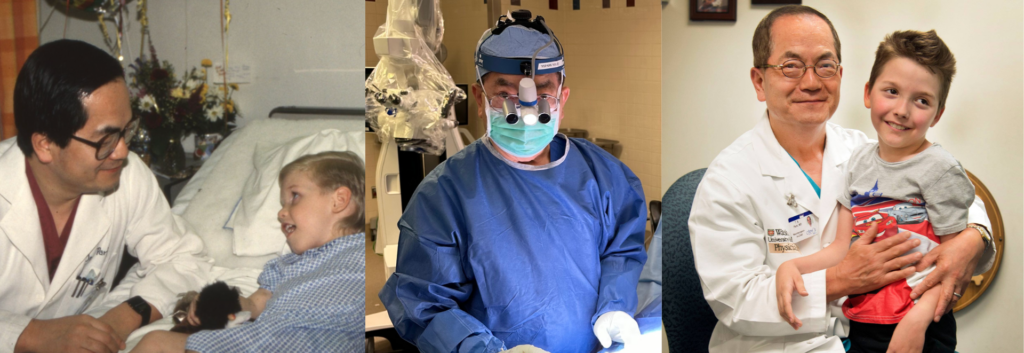T.S. Park Selective Dorsal Rhizotomy (SDR) Program
Our History

The T.S. Park Selective Dorsal Rhizotomy Program was created in 1989 by pediatric neurosurgeon T. S. Park, MD, who was a world leader in developing and refining SDR surgical treatments. Dr. Park performed more than 5,300 surgeries on children and adults from 87 countries in over 30 years and published more than 50 scientific articles on rhizotomy. Families traveled from around the world seeking care from this beloved surgeon. Additionally, Dr. Park helped build the Division of Pediatric Neurosurgery at St. Louis Children’s Hospital into one of the best in the nation.

When Dr. Park retired in May 2024, he was succeeded by his colleague, Jarod Roland, MD, who trained under Dr. Park during his residency and fellowship at St. Louis Children’s Hospital. When asked about his successor, Dr. Park said: “I have carefully watched Dr. Roland’s progression from neurosurgery resident to pediatric fellow and now my colleague. His judgement and surgical skills are excellent.”
What is spasticity and cerebral palsy?
Cerebral palsy spasticity inhibits a child’s muscle growth, causing muscle contractures and orthopedic deformities. If a child’s spasticity is reduced at a young age, the deformities can become less severe. Selective dorsal rhizotomy (SDR) is a neurosurgical procedure that reduces spasticity and improves the ability to walk and stand.
Who benefits from SDR surgery?
All children with spastic diplegia, triplegia and quadriplegia following premature birth should be evaluated for selective dorsal rhizotomy. The center’s director Jarod L. Roland, MD, believes children with cerebral palsy spasticity should be evaluated for potential dorsal rhizotomy before other orthopedic procedures are performed.
For more information on criteria, please see Patient Selection.
If you are interested in being evaluated for selective dorsal rhizotomy, please click the button and fill out the Patient Information Form to complete a screening.
Contact us
St. Louis Children’s Hospital
One Children’s Place
Room 4S20
St. Louis, Missouri 63110 USA
Phone 314.454.2813, or toll-free 800.416.9956
Fax 314.454.2818
Why choose WashU Medicine neurosurgeons?
Faster recovery, fewer complications
The center’s approach to minimally invasive SDR removes only one level of the spine (vs. the typical two to three levels at other centers). Removing less spinal bone typically results in fewer spine and back complications later in life. Minimally invasive spine surgeries can result in less intense pain for patients and less weakness following surgery.
Unequalled patient outcomes
Physicians in the center have continually refined SDR surgery based on patient outcomes and the best methods to treat spasticity. Thanks to this relentless focus on improvement, the center’s patients have unparalleled outcomes.
Team approach
Our center follows a team approach to patient care that involves the expertise of orthopedic surgeons, neurosurgeons, nurses, dietitians, social workers, child life specialists, and physical and occupational therapists. The family is considered an important member of the team as well. This team approach helps us provide treatment programs that promote understanding, interaction and independence for both your child and your family.
Minimally invasive controlled lengthening
After spasticity is addressed with SDR, Dr. Roland collaborates with pediatric orthopedic surgeons specializing in minimally invasive surgery, to relieve joint contractures, which limit joint motion.
Orthopedic surgeons use a minimally invasive procedure to lengthen the tendon, allowing the muscle to return to its normal length and the joint to straighten. The minimally invasive approach allows for a quicker recovery, with patients able to bear weight immediately and return to physical therapy sooner.